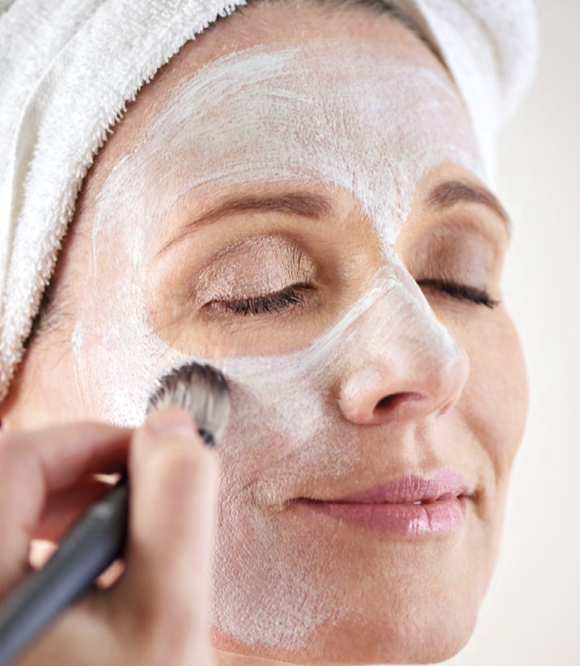When the temperature drops and the furnace comes on, the air in the house dries out and so can your skin; here are a few pro tips for fending off the ravages of winter
By Constance Cazzaniga
Colder weather means it’s time to trade T-shirts and shorts for boots and a coat, and the need for a seasonal swap applies to skin care too.
“In the summer, we use lighter creams, while in winter, our skin has different needs,” says Marie-Claude Côté, director of training at Clarins Canada. She advises using facial-care products that are especially hydrating and nourishing when the furnace comes on.
The need for giving special attention to hydration is even greater for those who are 50 or older, whose skin tends to be drier because it produces less sebum and is subject to slower cell renewal. “Mature skin is a little more sensitive, and external stresses can cause irritation,” says Kalyane Poliquin, founder of La Natura Casa, a skin-care company in Saint-Jérôme, Que. This is true for both women and men, even though men’s skin is thicker.
Drier air and fluctuations in temperature can cause discomfort and redness as well as accentuate wrinkles and fine lines, which become more noticeable. How can you rectify the situation? Although it’s always a good idea to drink plenty of water, Côté says, that alone isn’t enough to keep skin supple. “That’s why it’s important to use products that will hydrate and soothe skin.”
In the winter months, opt for day and night creams with a richer texture and boost their effects using complementary products such as serums and hydrating masks. Poliquin suggests looking for ingredients such as glycerine, hyaluronic acid, and shea butter—emollients with moisturizing properties that help to maintain the skin’s protective hydrolipidic barrier.
Here’s what the experts recommend for your winter beauty routine.
Clean gently. Use a hydrating cleanser every morning and evening, whether it’s a gel, a milk, or a foam. Opt for gentle “soap-free” products.
Do a serum treatment. Hydrating, anti-wrinkle, anti-age spot, brightening—there’s a serum for every need. With its fluid texture, a serum moistens the skin and allows the products used afterwards to penetrate more deeply and therefore be more effective. “Applied morning and evening just before a cream, a serum is used as a curative treatment,” Côté says.
Exfoliate. Once or twice a week, you should use a fine-grained exfoliant scrub—such as jojoba microbeads or cellulose microspheres—to remove dead skin cells, especially if you have dry skin. “Choose a gentle, nourishing exfoliant,” Poliquin advises.
Hydrate. To protect the skin well, a moisturizing cream or oil is important, morning and evening. For masks, once or twice a week will do, depending on your skin’s needs and your schedule. If you’re short on time, an overnight mask, which you don’t need to rinse off, might be more convenient. Here’s a tip for when you’re on the go: Poliquin recommends using a protective balm daily and reapplying it as soon as you feel dryness or irritation set in, especially if you’re planning an outdoor activity when the temperature is below zero. Add it to your après-ski bag!
Put on sunscreen. UV rays don’t take time off during the winter. Just the opposite: they reflect off the snow, which is why it’s important to continue your good habits even in winter.
Use a humidifier. “Using a humidifier can make a big difference to the skin in winter,” Poliquin says. Nighttime is the ideal time to use one, when the skin goes into regeneration mode, she explains.






